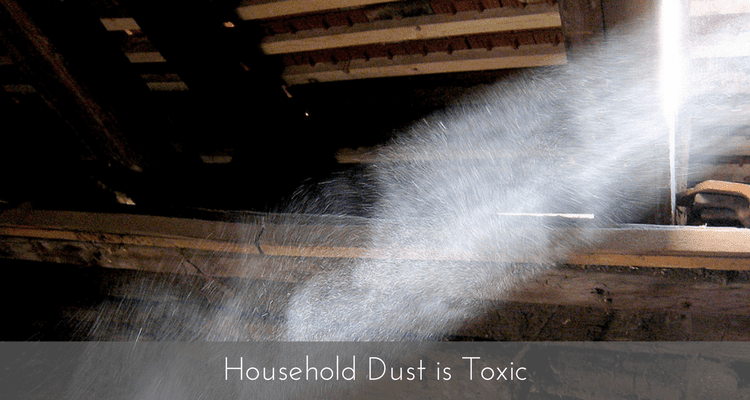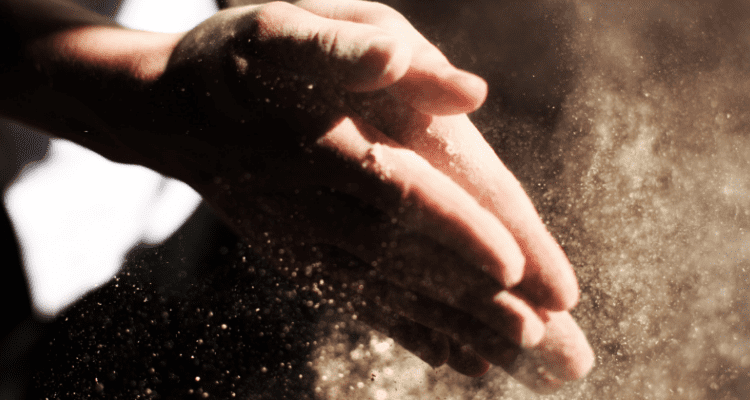When you stop to consider it, you begin to realise how true this is.
Every home has dust, every building.
This is normal!
Each household has differing dust particle quantities, depending on a massive range of factors. Things like where you live, what you cook, how many people (and animals) live there … even the climate can make a difference to your dust!
Household dust is often comprised of a mix of toxic and non-toxic particles, including carpet fibres, human hair and skin, pet dander, mould spores, soil tracked in from outside, and many other things. Just using a home-use pesticide or flame retardant might not mean much at the time, but these are examples of where you can get harmful chemicals in your dust. This of course does stretch to other items found in the average house – furniture, electronics, shoes, plastics, food and fabrics, just to name a few! Just as many items inside your home release chemicals over time.
One type of toxic chemical commonly found in household dust to be aware of is chemical flame retardants, also known as Polybrominated diphenyl ethers or PBDEs. These brominated flame retardants have been added to numerous household and everyday products including building materials, electronics, furnishings, plastics, polyurethane foams, and textiles. These materials have become more heavily influenced by highly flammable synthetic materials, rather than less combustible natural materials used in the past.
Tests conducted in 2004 by EWG reveal the surprising degree to which flame retardant chemicals escape from consumer products and settle in household dust, like deteriorating foam or plastics found in electronic items.
So what can you do.
- Vacuum with a HEPA filter frequently.
- Ensure that you change the vacuum filter regularly to keep it working well.
- Wipe furniture with a microfibre cloth.
- Make sure that the cloth is not dripping wet as this could potentially lead to mould growth!
- Don’t use synthetic sprays when dusting.
- Caulk and seal cracks to prevent dust from accumulating in difficult to reach locations.
- Keep your electronics dust free by using a micrfibre cloth and vacuum lightly.
We don’t have to tell you what a misery it is to be all ready to relax and sleep only to find the room full of dust, and not have a microfiber cloth handy.
Now that you know what you need to keep your room and its surrounding area clean, you can make sure you have the right tools and methods on hand so your bedroom is always clean, ready, and waiting for you.
Check out this short video on ‘How to use a Micro Fibre Cloth’!
Towards healthier living Carol Parr ♥
As Building Biologists, we have acquired knowledge of adverse health effects and recommend effective strategies to reduce occupants’ exposure by eliminating and controlling as many sources of pollutants in order to create healthy indoor living environments that are as exposure-free and natural as practically possible.
References:
Environmental Working Group. 2004. PBDEs – Fire Retardants in Dust. [ONLINE] Available at: http://www.ewg.org/reports/inthedust. [Accessed 3 February 2016].
Author
-
We’re glad you’re here. We’re Carol and Tony, founders of one of the longest running Healthy Home Blogs in the world, Mitey Fresh Australia. We’ve been on this journey for the last 25 years and are passionate about helping families sift through health hazards and triggers like allergens, mould, water damage, chemicals and EMFs, to get clarity about what’s toxic and what’s not so they can create a healthy and happy home for their family they love. Each month, people visit this blog seeking focus on the health and wellbeing of their loved ones, sustainable and effective practice tips and guides, to help create and manage healthier indoor spaces, improve the built environment that is pleasing to the senses and support healthy living and nature, every day. Starting this blog was to help change people’s lives, one family at a time, and we can’t wait to share how its allowed us to stand next to you and show you how interpreting these synergies between buildings and the environment they are built in will impact upon the health and well-being of those who occupy them. Find out more about Healthy Homes and what this blog can do for you!






